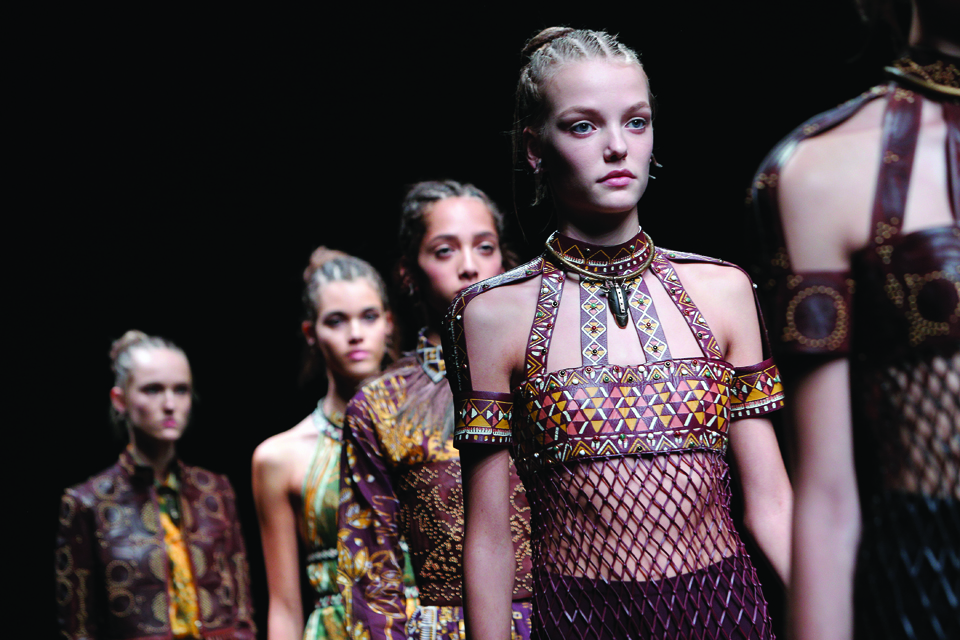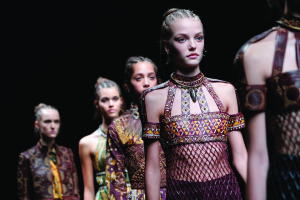
By Catherine Clements | Student Columnist

It is 2015 and fashion has finally caught up with our ever-diverse world.
Swedish clothing retailer H&M proves that fashion has no boundaries in its recent campaign, “Close the Loop.” This advertisement communicates H&M’s company mission: to make the fashion industry more sustainable through recycling.
What’s most striking about its new campaign isn’t the environmental focus; it’s the diversity.
H&M’s campaign features more than 60 models of all different shapes, sizes, cultures and religions. One of the most surprising elements of the ad is model Mariah Idrissi and her hijab, a traditional scarf that covers the head and neck.
This is the first time H&M has showcased a Muslim model. It is fabulous that H&M is focusing on such an overlooked group. It shows that the fashion industry is capable of becoming just as vast as their consumers.
The feature of a Muslim model is a serious win for Muslim women everywhere. Idrissi explains in an interview with Fusion that she feels Muslim women are usually ignored when it comes to fashion. She said, “Our style, in a way, hasn’t really mattered, so it’s amazing that a brand that is big has recognized the way we wear hijab.”
With a growing population of Muslim-Americans in the United States, the fashion industry should adapt to them. The Pew Research Center demographers estimate that 2.75 million Muslims are living in the United States, an increase of 400,000 people from 2007. Up until now, Muslim women have been overlooked because retailers do not understand the hijab. But H&M proves someone is finally getting it.
The hijab isn’t just a clothing fad but a symbol of the Islamic faith. It’s a symbol of modesty. This has to be respected when designers tap into the Muslim market. The idea is that not just anyone can be a hijab-wearing model.
Idrissi said in a CNN interview that “the hijab can be adapted for fashion; it isn’t fashion.”
This presents a potential problem with featuring the hijab in mainstream fashion and could cause issues with retailers.
Idrissi further explained that “whoever does decide to represent hijab has to be clued up with [the religious importance].”
However, it’s not just Muslim women that get overlooked in the fashion industry. When I think of a model, the same general characteristics come to my mind: thin, tall, pretty. It doesn’t seem to matter what brand the models represent; they all have these traits. Anyone that doesn’t fit the cookie-cutter mold is typically excluded in the market.
Plenty of groups aren’t represented in the fashion world: average-sized, transgender or black models. No individual or group should feel underrepresented. People want to feel good in their clothes. I think of my outfit choice as a representation of who I am as a person. So how can someone dress to who they are if a market doesn’t even exist for them?
It is crazy to think how deeply rooted our rules of fashion are. Who ever said you can’t wear yellow if you have blonde hair? Or you can’t wear a short skirt after a certain age? Somehow these ideas became the standard. Everyone wears clothes, therefore they should be designed for all people — short, tall, thin, fat, man, woman.
H&M’s campaign shows that there are no rules when it comes to fashion. Their campaign encourages individuals to dress only for themselves, a “you do you” sort of mentality. It is about time we begin to break out of clothing stereotypes. Individuals should be able to look at the fashion industry for inspiration and see models that emulate qualities they share.
This forward thinking is going to open up the definition of beauty. It seems like designers and retailers are finally beginning to embrace natural beauty.
Features that were once in previous decades airbrushed, dyed or fixed are now becoming a model’s defining feature. The fashion industry isn’t trying to cover up models differences anymore. Take British model Georgia May Jagger as an example. She is known on the runways of Britain for the gap between her teeth. Idrissi, like Jagger, is embracing what makes her different. The hijab is Idrissi’s defining feature. It doesn’t have to be something that’s hidden or excluded from fashion anymore.
H&M defines a new normal in their campaign. Their company uses its ad to challenge old ways of thinking and embrace new individuality. It’s about time. I hope to see more companies market this way in the future.




